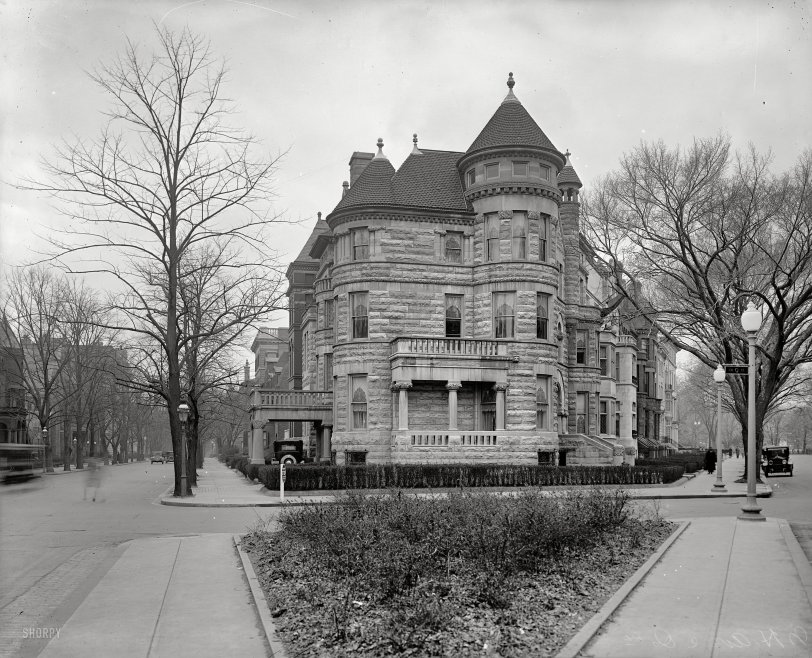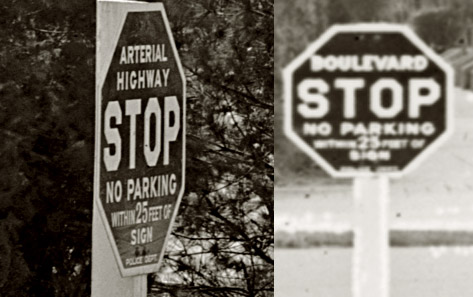


Framed or unframed, desk size to sofa size, printed by us in Arizona and Alabama since 2007. Explore now.
Shorpy is funded by you. Patreon contributors get an ad-free experience.
Learn more.

- Lost in Toyland
- And without gloves
- If I were a blindfolded time traveler
- Smoke Consumer Also Cooks
- Oh that stove!
- Possibly still there?
- What?!?
- $100 Reward
- Freeze Frame
- Texas Flyer wanted
- Just a Year Too Soon
- WWII -- Replacing men with women at the railroad crossing.
- Yes, Icing
- You kids drive me nuts!
- NOT An Easy Job
- I wonder
- Just add window boxes
- Icing Platform?
- Indiana Harbor Belt abides
- Freezing haze
- Corrections (for those who care)
- C&NW at Nelson
- Fallen Flags
- A dangerous job made worse
- Water Stop
- Passenger trains have right of way over freights?
- Coal
- Never ceases to amaze me.
- Still chuggin' (in model form)
- Great shot
Print Emporium
Q Street: 1925

Washington, D.C., circa 1925. "Panama Legation, New Hampshire Avenue and Q Street N.W." 18th Street is on the left and New Hampshire Avenue on the right. This is one of the earliest examples of a stop sign ("Boulevard Stop") in the archive. National Photo Company Collection glass negative. View full size.
Damn shame, I say
I always wanted to refurbish and live in a residence like this!
The details like curved glass windows and all the ornate features would keep me viewing for hours.
Granite Menagerie
The carved stone ornamentation on this house is unexpectedly rich and whimsical, and there are both real and imaginary animal faces all over it: lion heads on the porte-cochere capitals and the second floor balcony rail, foliage-chewing grotesques on the first floor capitals, and a whole chorus line of bird and mammal faces interspersed among the foliage motifs on the little corbels under the eaves. The dense foliage meanders of the third floor belt course are quite like the chased borders on Gorham silver serving plates from the same period, and the other foliage motifs on the house resemble 1890s printer's vignettes. These cheerful details lighten what would otherwise be a pretty brutal façade.
Early traffic control
I'm still not asking anyone...
It's nice to see a readable street sign ("NW Q St." - on the far right), compared to the little street lamp attachment in front of the stop sign. I'd have gone blind in the 20's trying to figure out where I was.
Stop sign
So when did stop signs come into use?
Must have been a lot of accidents before then.
Wish I could read what else is written on the sign.

The glass is half full.
Just because the big one on the corner is gone is no reason to be glum. Looks like the rest of the block has been spared.
Take a look at this blow up of right of the original:
(start with the lighter colored stone & work to the right)

Now this google street view:
Here comes the neighborhood
Wow, now this one is really interesting; it appears the granite house has been torn down, but someone erected a facsimile of the architecture in its place (albeit in a more shallow form). If you look closely, the brick house to the left (with double arch windows) as well as the two houses to the right (smooth white stone with balconies) are all still standing. Apparently when Q street (with its stop sign) was widened, the house came down. Perhaps someone decided the neighborhood needed to regain a little of its past glory, so this fakery went up!
[The building shown in the Google Street View below was already there (minus the stair tower) when the 1925 photo was taken. - Dave]
Precursor
A clue to the modernization that would catch up with this beautiful building would be the boulevard-style street lights on the right side of the photo, and the old gaslight-style lamps on the left side. Then there is that ominous stop sign thingamabob!
Ugh!
It's been all bricked over! Why?! I honestly don't know, is there a practical reason for bricking over these old buildings--does it protect it better? Or is it just an architectural fashion?
[The house in the 1925 photo is gone. That's a different building on a different lot in the Google Street View. - Dave]
Test Of Time
I would have thought that the magnificent old solid stone home in the foreground would have withstood the test of time, and still be there today. Unfortunately, time, parking space, and the wrecker's ball appear to have caught up with it.
























On Shorpy:
Today’s Top 5